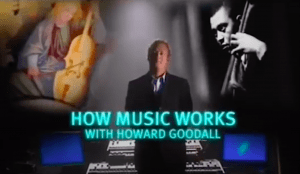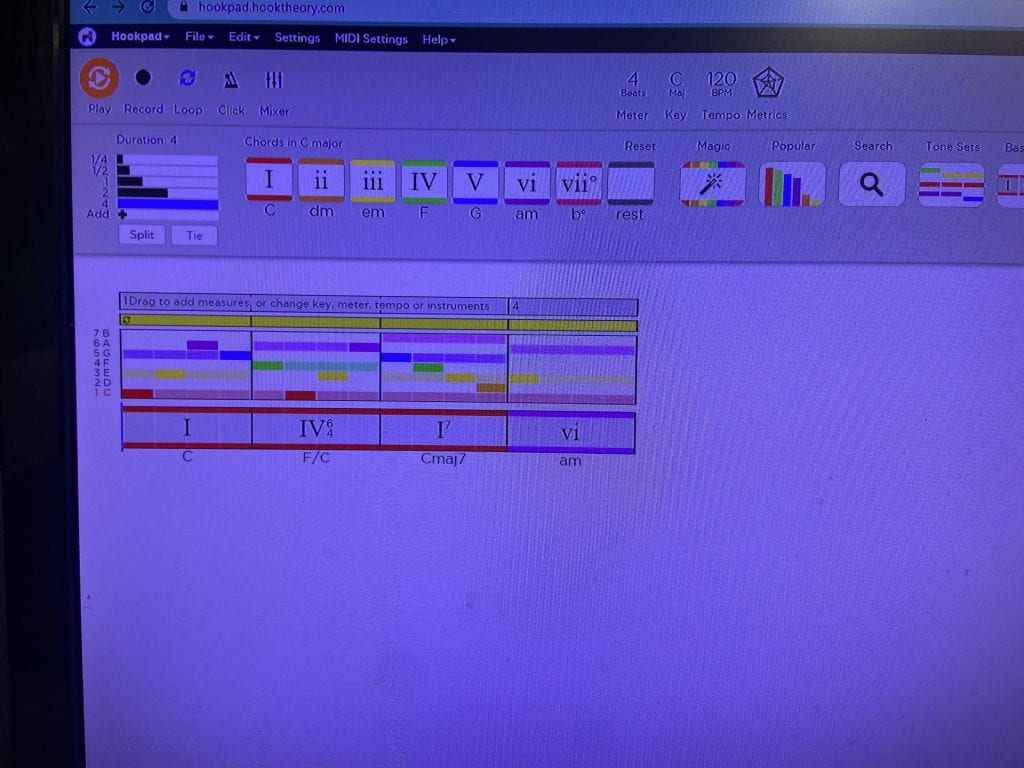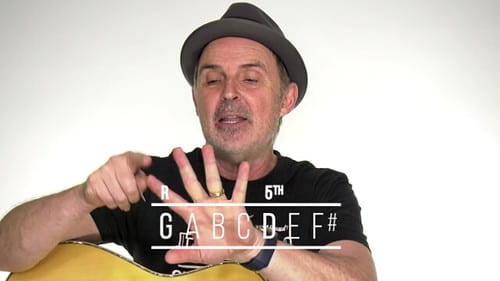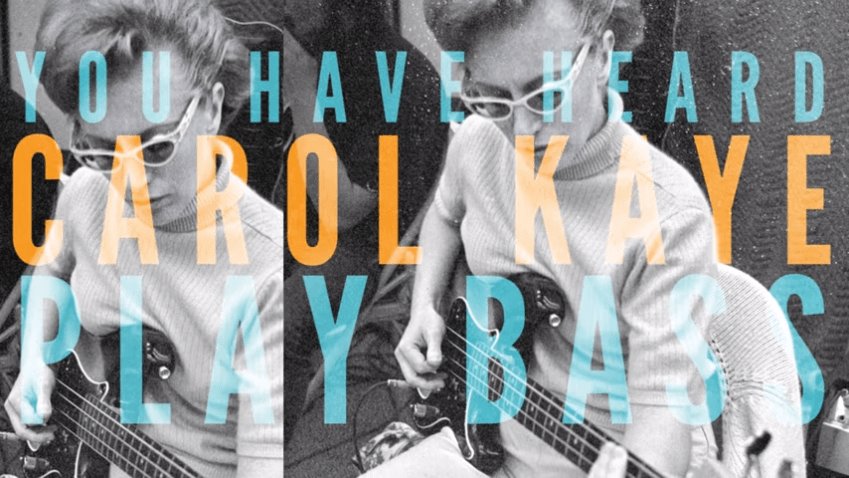
SUMMARY
For this project, we watched Howard Goodall’s “How Bass Works” documentary, and applied what we learned both there and through HookTheory to the guitar in order to create our own bassline.
CLASSROOM

Watch How Bass Works (47 minutes)
Notes from Howard Goodall’s “How Bass Works” Video
| Cue | Notes |
| Why was it so hard to make low notes on stringed instruments? My baritone guitar is meant to be tuned very low. Is there a formula for what “level” of bass will sound good depending on the note? | Hundreds of years ago, people and musicians wanted to recreate the sound of an organ outside of a church, specifically in stringed instruments. Generally, as the tune or melody goes up, the bass-line might go lower to compensate to create a sense of falling, or higher to create a sense of rising. Especially when in contrast, you can make some interesting and memorable sounds. Independent bass lines really revolutionized music and offered new ways to create and write. |
Summary: Bass is a surprisingly simple mechanism to make music complex, and have become the backbone of what makes lots of musical pieces “catchy.”
LAB

I like all the bass options it gives you, and the fact you can choose all these presets. I wish you could overlay bass and chords, though.
PRACTICE ROOM

I think Tomas Michaud’s exercise was good practice, and probably very beneficial for a lot of people, but I realized I had already learned how to strum bass notes on the guitar on my own. Definitely good review, but didn’t necessarily learn anything new.
Profile in Excellence

Profile in Excellence

OUTSIDE / JOURNAL / IDEAS
Musings on my walk: I really want to figure out if there is a pattern to what bass notes go to which chords, and that goes further into how I want to learn more music theory. I’d love to be able to hear a chord someone is playing and just be able to… play. That’s a skill I really, really appreciated in both Carol Kayes’ and James Jamerson’s playing: they were both musicians with not only a great deal of creativity and drive, but the knowledge and the genuine forethought to back up what they played. Talent can only take you so far.
STUDIO
I wrote a short three-note bassline on the Low E that I thought was OK. I want more access to more notes, and also realize I really need to practice licks and leads on the guitar in general more. Came out kinda crappy.
CONTROL ROOM
The recording went alright. It was choppy and recorded on my phone, but I was able to send it to my email and run it through an mp3 converter to get it onto the blog. I want to learn how to audio mix really bad. My grandpa knows how to and does it all the time, so I reckon that’s a good start.
WHAT I LEARNED and PROBLEMS I SOLVED
I learned a lot about how bass goes along with notes. Generally, a bass doesn’t JUST have to support, or be the same note as the melody but deeper, or this or that. It can drive the song, and in many ways even be a rhythm or a melody in its own right. I’m learning that music theory isn’t really what I thought, and what’s complex about it isn’t the technical aspect but the creative aspect, if only in that it’s controlled. I ran into a fair amount of technical problems with Hookpad and the like, but at this point into the class I was able to problem solve on my own and figure out where to find basslines, how to export, etc. Fun project!
DAILY ACTIVITY EVALUATION
- Give feedback on the class Content and Process
- Participation will be part of your leadership project due at the end of the course
- Fill in the Daily Activity Evaluation